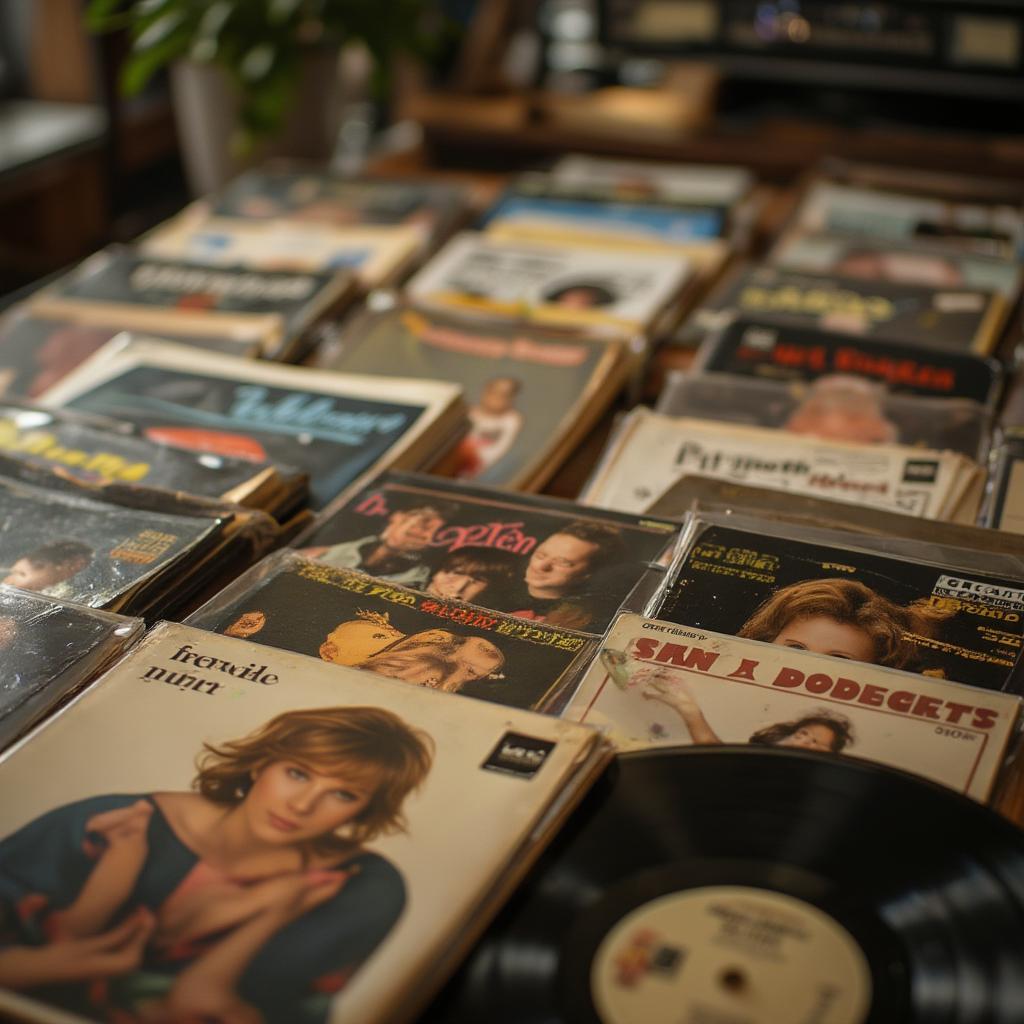Unveiling the Allure of Soft Pop Hits: A Journey Through the Genre

Soft Pop Hits, with their gentle melodies and relatable lyrics, have carved a significant niche in the music world. These tracks aren’t about loud beats or aggressive energy; they’re about creating a mood, a feeling, a comforting space where listeners can connect with the music on a personal level. This article will delve into what makes soft pop so appealing, its evolution, and why it continues to resonate with audiences today. We will explore the key elements, its unique charm and delve deeper into what makes this genre a timeless favorite.
The Essence of Soft Pop: What Makes it So Captivating?
At its core, soft pop is characterized by its easy-listening nature. Think acoustic instruments, layered harmonies, and lyrics that often touch on themes of love, relationships, and self-reflection. It’s the kind of music you might hear on a Sunday morning, during a quiet drive, or at a relaxed gathering with friends. But beyond its gentle facade lies a carefully crafted sound that combines catchy melodies with emotional depth.
- Melody-Driven: Soft pop songs emphasize a strong, memorable melody. This makes them easy to sing along to and keeps them stuck in your head (in a good way!).
- Soothing Vocals: Vocal performances are typically smooth and gentle, often employing harmonies and nuanced phrasing.
- Relatable Lyrics: The lyrics often explore everyday emotions and experiences, making them relatable to a wide audience.
- Simple Arrangements: The instrumentation is generally stripped down, focusing on acoustic instruments like guitars, pianos, and light percussion, allowing the melody and vocals to shine through.
How Soft Pop Achieved Its Popularity
Soft pop’s roots can be traced back to the late 1960s and early 1970s, when artists started incorporating more intimate and melodic elements into their pop music. Acts like The Carpenters, Bread, and Carole King paved the way for the genre with their focus on polished vocals and sentimental storytelling. The 1970s saw soft pop reach its peak, becoming a mainstay on radio airwaves. This era introduced us to hits that remain classics, demonstrating the enduring appeal of the genre.

The genre experienced a bit of a shift in the 1980s, blending with other pop subgenres. However, its core elements remained, ensuring its continued relevance. In recent years, soft pop has seen a resurgence, with a new generation of artists bringing their own take to the genre. It is a testament to the timelessness of the sound that it continues to evolve while retaining its signature characteristics. This leads us to our next question – what elements make for a truly exceptional soft pop song?
Essential Ingredients of a Perfect Soft Pop Hit
Crafting a memorable soft pop hit isn’t just about writing a catchy tune; it’s about creating an emotional experience for the listener. There are key elements that successful artists use to ensure their songs resonate deeply.
- Vocal Delivery: The singer’s voice must be warm, inviting, and capable of conveying a range of emotions.
- Instrumentation: The use of acoustic instruments and light percussion creates a soothing and intimate atmosphere.
- Song Structure: The song structure is typically simple and accessible, often following a verse-chorus-verse pattern.
- Production Quality: While the instrumentation is generally simple, a high-quality production is crucial to bringing out the best in the song.
“A great soft pop hit is all about creating an emotional connection. It’s not about being loud; it’s about being genuine and relatable,” says renowned music producer, Thomas Blake. “The melody is like the hook, but the lyrics and vocal performance are the heart of the song.”
Soft Pop and its Subgenres: Exploring the Nuances
While “soft pop” itself is a genre, it has been interpreted differently by various artists, giving rise to several subgenres. Let’s explore some notable ones:
- Acoustic Soft Pop: This subgenre focuses on stripped-down arrangements, often featuring acoustic guitars and pianos as the primary instruments. Think of artists like Ed Sheeran or early Taylor Swift.
- Synth-Pop Infused Soft Pop: This variant incorporates synths and electronic elements for a modern twist while retaining the gentle nature of the genre. You might see similarities to new pop rock at times.
- Indie Soft Pop: Blending the indie aesthetic with the soft pop sound, this subgenre brings a more alternative edge to the genre. It’s a great mix of mainstream sound with an independent spirit.
- Adult Contemporary Soft Pop: Aimed towards a more mature audience, this form of soft pop often features slightly more sophisticated arrangements and explores themes of reflection and maturity.

Understanding these subgenres can help you appreciate the diversity within soft pop. It’s not just a singular sound, but a family of styles that cater to various preferences while adhering to the core tenets of the genre. In addition to these, the influence of slow pop rock can also be felt in several softer pop ballads.
Why Does Soft Pop Endure? The Genre’s Lasting Appeal
So, what is it about soft pop that has allowed it to remain relevant for so long? The answer is multilayered.
- Emotional Resonance: The music connects with listeners on an emotional level, often tapping into universal experiences and feelings.
- Comforting Sound: The gentle nature of the genre offers a sense of comfort and relaxation, providing an escape from the stresses of everyday life.
- Timeless Appeal: Soft pop often transcends trends, focusing on timeless melodies and themes, rather than relying on fleeting fads.
- Versatility: Whether you’re looking for background music or a soundtrack for introspection, soft pop offers a wide range of moods and emotions.
“The beauty of soft pop is its simplicity,” says acclaimed songwriter, Emily Carter. “It’s music that doesn’t try to be something it’s not. It’s honest, emotional, and, most importantly, relatable.”
Soft Pop in the Modern Era: A Contemporary Perspective
While many might consider soft pop to be a genre of the past, it’s very much alive and thriving today. Modern artists are constantly putting their spin on the genre, showing its flexibility. In contemporary pop culture, it has become more common to hear hints of soft pop in numerous top charting songs, showing how impactful it has become. Today, you can easily find new artists who embrace the core elements while also adding modern production techniques. This creates a sound that feels both familiar and fresh, allowing the genre to continue to evolve while keeping its heart intact. There’s even some overlap between soft pop and pop rock 90’s music in how certain melodies and harmonies are used.
The Future of Soft Pop: What’s Next?
As we look ahead, it’s clear that soft pop is here to stay. The genre’s timeless appeal, combined with its ability to evolve with the times, ensures its continued relevance. With the rise of streaming services and social media platforms, more and more listeners are discovering or rediscovering the magic of soft pop. Expect to see further genre blending and experimentation, leading to even more interesting and innovative interpretations of the sound. The focus will remain on the core elements: heartfelt lyrics, memorable melodies, and a comforting sound that connects with listeners on a personal level.

There are very few genres as consistent and enduring as soft pop and that can surely be said about the soft pop sounds of the top of the pops 1982. And just like the music itself, we will always see more pop in the charts in the future with the growing trend of soft and calming music in the pop genre today. And let’s not forget to mention the fact that artists who create lagu dj pop also tend to use similar melodic structures in their tracks, giving yet another example of its lasting impact on the world of music.
Conclusion: The Enduring Charm of Soft Pop Hits
Soft pop hits are much more than just catchy tunes; they’re an experience. They offer comfort, emotional release, and a sense of connection, which is why they continue to resonate with listeners of all ages. From their beginnings in the 1970s to their modern resurgence, these songs have consistently proven their timeless appeal. As a songwriter and producer, I’m dedicated to creating new soft pop music that embodies the classic sound while also pushing the genre forward. Soft pop will continue to evolve, but its heart—its gentle melodies and heartfelt lyrics—will always remain the same.
Frequently Asked Questions (FAQs) About Soft Pop Hits
-
What exactly defines a soft pop song?
A soft pop song is characterized by gentle melodies, smooth vocals, and relatable lyrics. It often features acoustic instruments and has a laid-back, easy-listening feel. It tends to focus on creating an intimate and emotional connection with the listener. -
Who are some iconic soft pop artists?
Some of the most influential soft pop artists include The Carpenters, Carole King, Bread, James Taylor, and more recently, artists like Ed Sheeran and Adele who incorporated many of its elements in their songs. These artists have helped shape the sound of soft pop over the decades. -
How does soft pop differ from regular pop?
Regular pop music often features more energetic beats and a wider range of electronic instruments, whereas soft pop emphasizes acoustic instruments, gentle melodies, and a more intimate vocal style. Soft pop focuses on creating a relaxed and emotionally resonant atmosphere. -
Why is soft pop so popular even today?
Soft pop’s enduring popularity stems from its ability to connect with listeners on an emotional level. Its gentle and comforting sound also provides a welcome escape from the stresses of daily life, making it a timeless genre. -
Are there any subgenres within soft pop?
Yes, there are. Some notable subgenres include acoustic soft pop, synth-pop-infused soft pop, indie soft pop, and adult contemporary soft pop. Each subgenre puts its own spin on the core soft pop sound while maintaining its essential characteristics. -
What is the best way to discover new soft pop music?
Streaming platforms like Spotify and Apple Music have curated playlists dedicated to soft pop. You can also find recommendations through music blogs, social media, and listening to radio stations with an emphasis on easy-listening genres. -
What makes a soft pop hit stand the test of time?
The timelessness of soft pop hits often comes from their honest emotions, strong melodies and lyrics that are easy to relate to by a broad audience. They often tackle universal feelings that are always relevant and are presented in a simple yet effective manner. -
Can soft pop be both relaxing and engaging at the same time?
Absolutely. Soft pop excels at creating a relaxing atmosphere without losing its ability to captivate the listener. Its melodies and lyrics can provide a sense of calm while also engaging listeners with its emotional depth. -
How does the production of soft pop music differ from more upbeat pop music?
Soft pop production typically focuses on highlighting the natural sound of acoustic instruments and the nuances of the vocal performance. It often uses less electronic manipulation and focuses more on creating a warm and intimate atmosphere in contrast to upbeat pop which may have heavier electronic beats and mixing.




